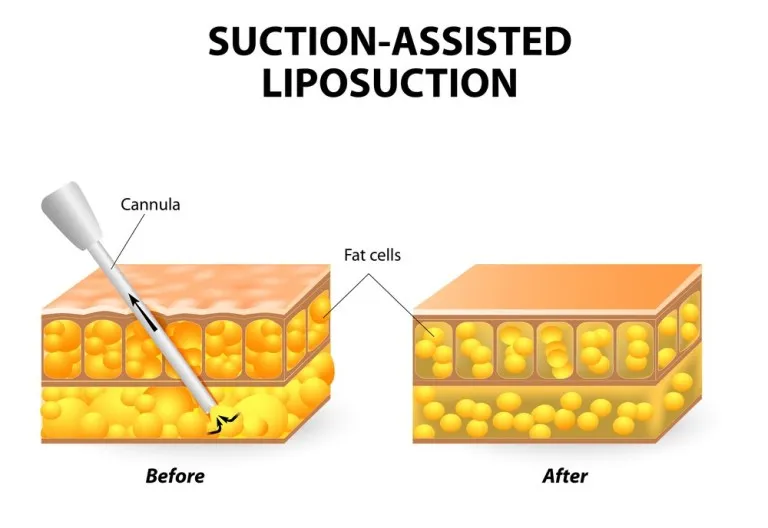Liposuction is a procedure that removes fat from certain areas of the body. It is usually done under general anesthesia, but sometimes a local anesthetic is used for specific areas.
Duration and Stay
– Procedure lasts 1 to 3 hours; most stay overnight in the hospital.
After Liposuction
– Support corset or bandages worn for weeks to reduce swelling and bruising.
– Antibiotics and painkillers may be prescribed for infection prevention and discomfort.
Recovery
– Varies based on procedure extent and job type.
– Follow surgeon’s advice on driving, physical activity, and bandage/corset removal.
– Gentle exercise can resume after a few weeks.
– Full results visible after about 6 months as swelling subsides.

Common Side Effects
– Bruising, swelling, numbness, scars, inflammation, fluid drainage, and swollen ankles.
Complications
– Uneven results, bleeding, persistent numbness, skin color changes, fluid in lungs, blood clots, and organ damage are potential complications.
Post-Procedure Care
– Contact clinic for severe pain or unexpected symptoms.
– Address dissatisfaction or concerns with the surgeon through the hospital or clinic.
Here is a step-by-step explanation of how it is done
1. The surgeon marks the area where fat will be removed.
2. The area is injected with a solution containing anesthesia and medicine to reduce bleeding, bruising, and swelling.
3. The fat cells are broken up using vibrations, laser pulses, or a water jet.
4. A small incision is made, and a suction tube connected to a vacuum machine is inserted to remove the fat.
5. Any excess fluid and blood are drained.
6. The incision is stitched up and the treated area is bandaged.

The procedure usually takes 1 to 3 hours, and most people stay in the hospital overnight.
After liposuction, you will be given a support corset or compression bandages to wear for several weeks. This helps reduce swelling and bruising. You may also need to take antibiotics and painkillers to prevent infection and manage any discomfort.
Recovery time varies depending on factors such as the extent of the procedure and the type of job you have. It is important to follow your surgeon’s instructions regarding driving and physical activity. The bandage or corset can be removed while showering, and gentle exercise can usually be resumed after a few weeks. It may take up to 6 months for the full results to be visible, as swelling subsides.
Common side effects of liposuction include bruising, swelling, numbness, scars, inflammation, fluid drainage, and swollen ankles (if the legs or ankles were treated). Complications can include uneven results, bleeding, persistent numbness, changes in skin color, fluid buildup in the lungs, blood clots, and damage to internal organs. These risks should be discussed with your surgeon, who can also address any concerns or issues you may have after the procedure.
If you experience severe pain or unexpected symptoms, it is important to contact the clinic where the operation was performed. If you are unhappy with the results or believe the procedure was not done correctly, you should raise the issue with your surgeon through the hospital or clinic where you received treatment.
